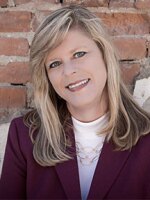Nine percent of the confirmed cases of COVID-19 in Ohio are in long-term care facilities such as nursing homes and assisted living communities – and some residents and staff are among the dead. The state said it will shed light on more information about that, but some data will stay hidden.
Matthew Steele’s father, Doug Steele, lives in an assisted living community near Cincinnati after having a stroke a few years ago. Steele said he’s gotten regular calls about testing and was notified when the first case of COVID-19 was found, but the calls have slowed down since.
“They said, 'we’re going to pause on letting you know every time we get a positive test because we know that there are going to be more,'" Steele said. They told him they'd share what they were doing and would call right away if his father was exhibiting symptoms. "But we wouldn't be getting regular updates every time they got a positive test,” Steele said.
A nursing home near Seattle was one of the first fatal hotspots of coronavirus early in the pandemic in the U.S. So those who have family members living in long term care facilities, and those who are working in them, have been on high alert for a while. Pete Van Runkle is with the Ohio Health Care Association, representing more than 2,000 nursing homes, assisted living facilities and other similar residences.
“Our members want to make sure that everybody is aware and that rumors and innuendo doesn’t start flowing around. They need to hear the true situation and what the facility is doing to safeguard everybody else when there has been a positive case.”
While Van Runkle said most facilities in his organization have been communicating with family members, soon those notifications will be required, because of an order from Gov. Mike DeWine – because he said these cases may not be public records.
“What I made was a policy decision. It wasn’t a legal decision. It was a policy decision that came from my heart and that is that people have a right to know what’s going on in a nursing home,” DeWine said.
The state is also requiring nursing homes to notify the Ohio Department of Health of positive coronavirus tests. Van Runkle said most nursing homes have tried to be transparent about what’s happening because they have lost staff members to COVID-19.
“I know that there have been some cases where they have passed away, yes.”
And Van Runkle confirmed there have been deaths among residents, too. “Yes – we’ve had hundreds of deaths in Ohio and some of those have been folks living in facilities.”
Van Runkle said nursing homes want to be a higher priority for testing, saying congregate settings where people tend to have worse outcomes should be top of the list.
Ohio Department of Health Director Dr. Amy Acton said 700 of the more than 7,600 confirmed coronavirus cases in the state have been residents at nursing homes and long term care and residential facilities. But Acton said with such limited testing available, she said they’re trying to test judiciously – prioritizing health care workers and the sickest patients.
“We are doing testing in nursing homes, but sometimes based on, you know, the history that is being taken there. They might do one or two or three cases. Now they have it and say we know we have it. So it's a very individual nursing home situation.”
Steele said he has confidence that the state is concerned about the safety of nursing home residents and staff, and he’s pleased with the actions of the facility where his father lives.
“Now, does that mean that I have supreme confidence in our ability to keep them all protected? I’m not sure that I can say that just based on what I see and the availability of resources. We can’t just create tests so that we can just test every resident in every one of these facilities, which is what I wish that we could do,” Steele said.
The state’s COVID-19 website will now include names of nursing home, assisted living and long term care facilities where positive coronavirus cases have been found, just as the Ohio Department of Rehabilitation lists the prisons where the virus has been discovered. But the state won’t list the total number of deaths of residents or staff from nursing homes and long term care facilities.





